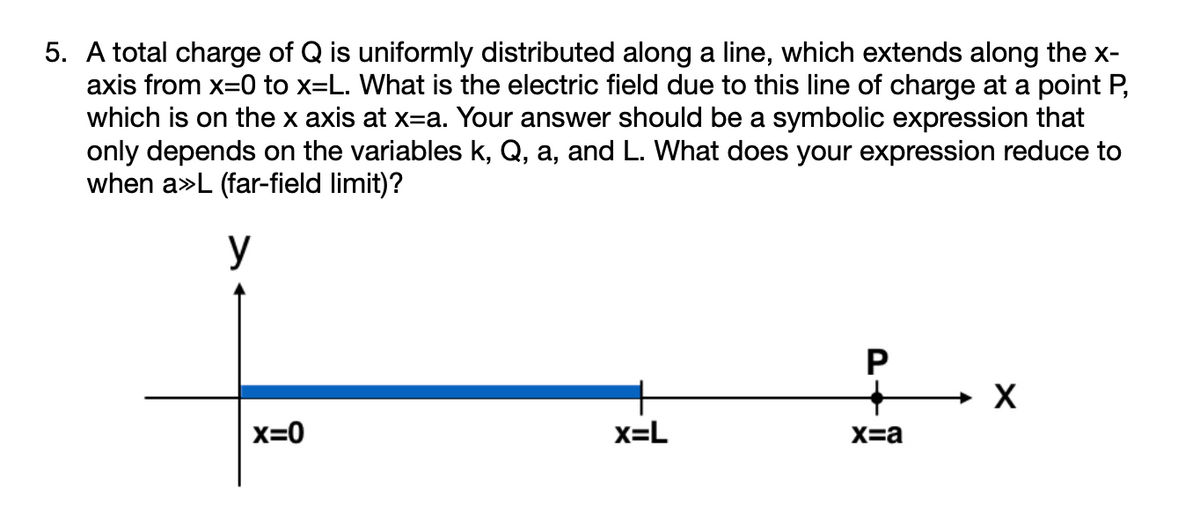A total charge of Q is uniformly distributed along a line, which extends along the x- axis from x=0 to x=L. What is the electric field due to this line of charge at a point P, which is on the x axis at x=a. Your answer should be a symbolic expression that only depends on the variables k, Q, a, and L. What does your expression reduce to when a≫L (far-field limit)?
A total charge of Q is uniformly distributed along a line, which extends along the x- axis from x=0 to x=L. What is the electric field due to this line of charge at a point P, which is on the x axis at x=a. Your answer should be a symbolic expression that only depends on the variables k, Q, a, and L. What does your expression reduce to when a≫L (far-field limit)?
Related questions
Question
A total charge of Q is uniformly distributed along a line, which extends along the x- axis from x=0 to x=L. What is the electric field due to this line of charge at a point P, which is on the x axis at x=a. Your answer should be a symbolic expression that only depends on the variables k, Q, a, and L. What does your expression reduce to when a≫L (far-field limit)?

Transcribed Image Text:5. A total charge of Q is uniformly distributed along a line, which extends along the x-
axis from x=0 to x=L. What is the electric field due to this line of charge at a point P,
which is on the x axis at x=a. Your answer should be a symbolic expression that
only depends on the variables k, Q, a, and L. What does your expression reduce to
when a»L (far-field limit)?
y
P
X=0
x=L
X=a
Expert Solution
This question has been solved!
Explore an expertly crafted, step-by-step solution for a thorough understanding of key concepts.
This is a popular solution!
Trending now
This is a popular solution!
Step by step
Solved in 2 steps
